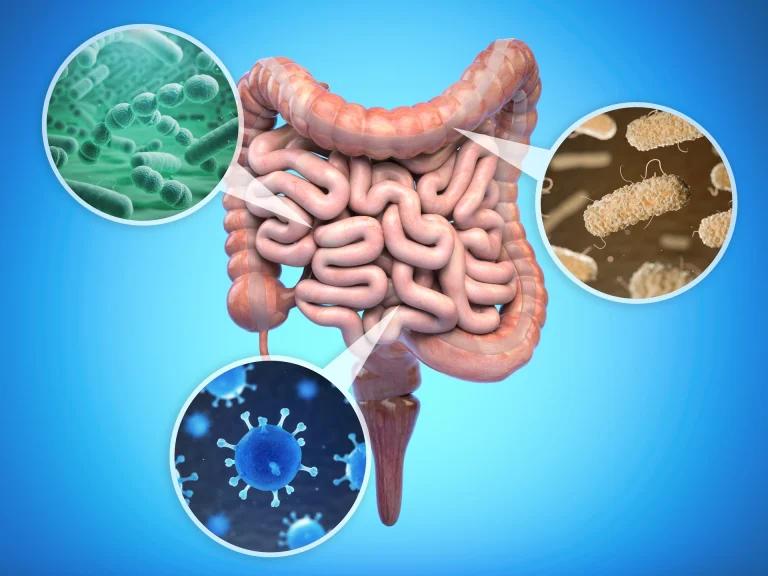Worms are a type of parasite that infects the human intestine and are particularly common in children aged 4-11 years of age. The eggs hatch in the gut and cause an intense itchy bottom. Threadworms are the most common type of worms, also known as pinworms that appear as white pieces of thread. Let’s look deeper into what threadworms are, their causes, symptoms and how to treat them.
📝 What are threadworms?
Threadworms known by their scientific name Enterobius vermicularis are tiny worms inside the intestines. They are often visible in poo which is one of the first signs of an active worm infection. They’re very small and often described as being about the size of a staple.
Threadworms in faeces are the most common in pre-schoolers and older children, but babies and adults can also catch them. It is thought that around two in five children will get threadworm infections at some point.
Once an egg has successfully entered the body, it will reach the large intestines hatching into a threadworm. Once grown adult female worms are ready to move to lay eggs around a person’s anus typically during the night. While laying eggs, the female threadworm also releases mucus that causes itching in the anal area. The female worm dies after laying eggs however reinfection can occur. This is because eggs get under the nails and onto the fingers when itching the area for relief and these eggs are swallowed starting the cycle again.
✏️ How do you catch threadworms?
The most common ways to catch threadworms are:
- Accidental infection with threadworms by swallowing worm eggs found on contaminated surfaces. A common contaminated area can be the anal area, which is typically scratched with the fingers and then placed near the mouth or food
- Touching surfaces or objects that have threadworm eggs on them, such as kitchen or bathroom surfaces, kitchen utensils, and then touching your mouth or food. Eggs can remain on these surfaces for up to two weeks, which makes the chance of infection higher
In parts of the world where food hygiene standards are poor and do not have modern toilets or sewage systems, there are other ways in which worms are transmitted:
- Touching soil or swallowing water or food with worm eggs in it
- Walking barefoot on soil containing worms
- Eating raw or undercooked beef, pork or freshwater fish (like salmon or trout) containing baby worms
🧪 What are the symptoms of threadworm infection?
The most common symptom people with threadworms will have is an intense itchy bottom, particularly at night.
Threadworms may be visible on your bedsheets or clothes, or you may notice them in your poo (faeces). They appear like thin, white, cotton threads.
Stomach pain, nausea and loss of appetite are less common symptoms but can happen if there are many threadworms in the intestines.
❗Are there any complications?
Re-infection is common. If an infection is left untreated it could result in more serious problems that need more investigation by a healthcare professional including:
- Loss of appetite
- Inflammation of the vagina
- Weight loss
- Insomnia
- Bedwetting
- Skin infections around the anus caused by scratching
- Pelvic inflammatory disease
- Urinary tract infection
🤔 Will threadworms go on their own?
Without treatment, threadwoods usually do not go away because the infection continues as long as the adult worms remain in the intestine. Also maintaining good hygiene is essential to prevent reinfection and further outbreaks. All household members should be treated at the same time, including those without symptoms again to prevent reinfection.
💊 Treatment for threadworms
Mebendazole is an over-the-counter treatment for threadworms belonging to a group of drugs called anthelmintics. Treatment is available as a chewable tablet or liquid. One dose kills the worms. A second dose after 2 weeks is sometimes needed if the infection has not cleared.
Anthelmintics paralyse the parasite by binding to its nerve and muscle cells, which disrupts glucose transport by cells. These sugars are essential to their survival, therefore this disruption stops the worms from staying alive. Within a few days, this leads to the death of the worms. Once dead, the worms are removed from the body by passing through the gut into the stools. Threadworm symptoms may still be experienced for a couple of days until the worms begin to die.
This treatment of threadworms only kills the adult worms and not their eggs. Therefore it is important to maintain strict hygiene standards during and after treatment to avoid any new eggs that can cause a new infection.
All family members, not just the infected person need to be treated to reduce the risk of reinfection.
💡 Tips you can follow to stop becoming infected again
Treatment will kill threadworms but does not kill the eggs, meaning reinfection can occur if medication isn’t taken for the full 2 weeks. Eggs can continue to live outside the body for up to 2 weeks.
Good hygiene measures
- Wash hands and clean underneath your fingernails with hot water, especially before eating, after using the toilet or changing nappies
- Encourage your children to wash their hands regularly
- Wash every morning
- Rinse toothbrushes before using them
- Keep fingernails short
- Wash sleepwear, sheets, towels and soft toys (at a hot temperature)
- Disinfect kitchen and bathroom surfaces
- Vacuum and dust with a damp cloth
- Change nightwear every night
Try to avoid doing the following:
- Do not shake clothing or bed linen, to prevent eggs from landing on other surfaces
- Do not share towels or flannels
- Do not bite nails, suck your thumbs or fingers
📝 Final key points
- Threadworms are common, especially in children aged 4-11 years.
- An inflamed, itchy bottom is the most common symptom of worm infections
- Treat everyone in the family when an outbreak occurs
- Prevent worm infections with strict personal hygiene and household cleaning
- Always seek medical advice
Sources
- Pinworms (Threadworms): Symptoms, How You Get Them & Treatment
- threadworms-June-2014.pdf
- Threadworms – NHS
- Threadworms: Advice for Referrers
- Enterobius Vermicularis – StatPearls – NCBI Bookshelf
Medical Disclaimer
NowPatient has taken all reasonable steps to ensure that all material is factually accurate, complete, and current. However, the knowledge and experience of a qualified healthcare professional should always be sought after instead of using the information on this page. Before taking any drug, you should always speak to your doctor or another qualified healthcare provider.
The information provided here about medications is subject to change and is not meant to include all uses, precautions, warnings, directions, drug interactions, allergic reactions, or negative effects. The absence of warnings or other information for a particular medication does not imply that the medication or medication combination is appropriate for all patients or for all possible purposes.





